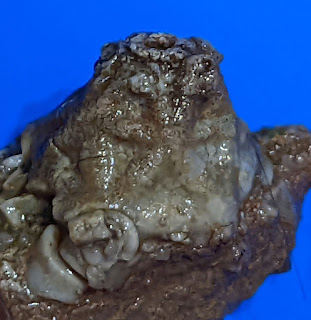I revisited pictures from my trip to Paris in 2016. This set of fossils are special in that they were found at the Falls of the Ohio, Clark County, Indiana USA. It was on display at the Muséum National D'Historie Naturelle Jardin Des Plantes Paléontologie et Anatomie Comparée in Paris France.The fossils were identified as
Siphonophrentis gigantea (Lesueur, 1821). They are now known as
Siphonophrentis elongata (Rafinesque and Clifford, 1820). Fossils date to the Middle Devonian Period.
You can see a picture of this fossil from 2009 in this posting:
https://louisvillefossils.blogspot.com/2009/09/visit-to-museum-of-natural-history-in.html
The genus was renamed from Zaphrentis to Siphonophrentis by Dr. Marjorie O'Connell in 1914. Click on her name to read about her interesting yet short career in paleontology I wrote about March 2021.





















